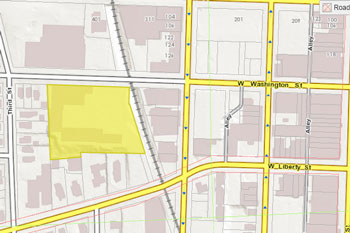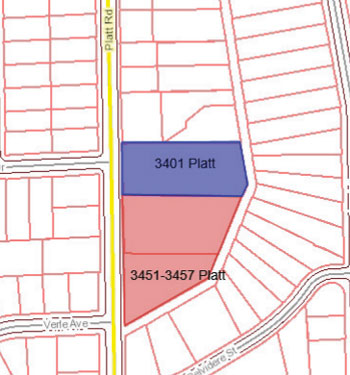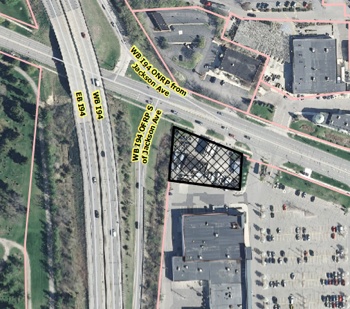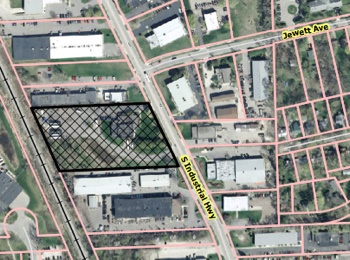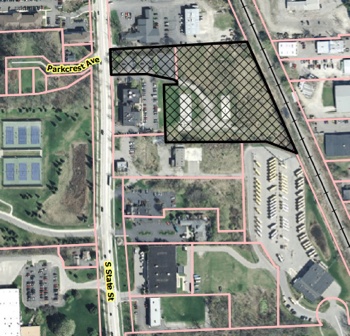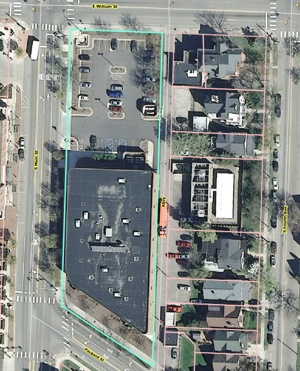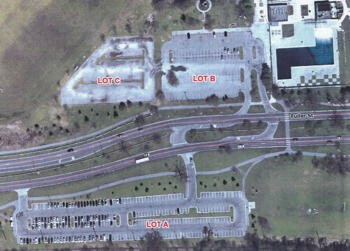Ann Arbor to Ask: Would You Sell That Land?
As a result of city council action on July 21, 2014, Ann Arbor’s city administrator will inquire with the respective owners about the availability of two parcels for purchase by the city – 2805 Burton Road, located just west of US-23, and 312 Glendale Road, on the city’s west side, just south of Jackson Road.
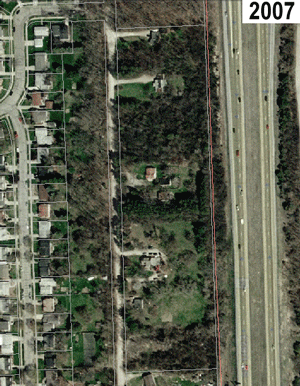
Animated .gif of the Burton Commons property showing the demolition of single-family homes on the parcels – from aerial images in the Washtenaw County and city of Ann Arbor GIS system.
If the parcels are available for sale, the council has also requested that the park advisory commission review the two properties and advise the city council by Oct. 1, 2014 about whether they are desirable for city purchase using parkland acquisition funds and private contributions.
Originally on the agenda was just an item related to the Burton Road property, brought forward by Stephen Kunselman (Ward 3). During the meeting, the resolution was amended – at the request of Chuck Warpehoski (Ward 5) – to include the Glendale property. The deliberations that led to the amendment and that resulted in the final wording of the resolution are reflected in The Chronicle’s live updates from the meeting.
The Burton Road property is the site of a long-in-the-works affordable housing project that has never started construction.
The land is immediately adjacent to US-23 to the east and Sylvan Park to the north. A residential neighborhood lies to the west of the land.
Kunselman had told his council colleagues at their June 2, 2014 meeting that he’d be bringing forward such a resolution for the Burton Road property. The idea would be to use funds from the open space and parkland preservation millage to purchase the land. The resolution states that the estimated fair market value, according to the city assessor, is $628,800.
One-third of the open space millage proceeds are supposed to be allocated to acquisition of land within the city limits. At the June 2 meeting, Kunselman argued for the purchase based on the positive impact on climate change and the adjacency of Sylvan Park to the north.
The purchase of the land would also be consistent with a sentiment Kunselman expressed at a recent mayoral candidate forum – that there was resistance in Ward 3, which he represents, to “dumping and piling on” affordable housing in that ward.
Kunselman is a candidate for mayor in the Aug. 5 Democratic primary, along with three other councilmembers: Sabra Briere (Ward 1), Sally Petersen (Ward 2) and Christopher Taylor (Ward 3).
The Glendale property is the site of a proposed development that was just recently in front of the city planning commission on July 1, 2014, but postponed. That meeting drew 22 speakers at the public hearing on the project, nearly all in opposition to it.
The plan calls for removing two vacant single-family houses and building six duplexes, each with two two-bedroom condos. (The original proposal had been for eight duplexes.) Based on the size of the parcel and the site’s zoning – R4B (multi-family residential) – up to 39 units would be allowed by right. Each unit would include two garage parking spaces, with 12 additional surface spaces on the site. That’s double the number of spaces required by zoning.
The amendment put forward by Warpehoski to include the 312 Glendale parcel in Kunselman’s resolution indicated that the estimated land value of the 2.64-acre parcel is $345,200.
On the combined resolution for both the Burton Road and the Glendale parcels, the vote was 8-2, with dissent from mayor John Hieftje and Sally Petersen (Ward 2). Sumi Kailasapathy (Ward 1) was absent due to illness.
This brief was filed from the city council’s chambers on the second floor of city hall, located at 301 E. Huron.





